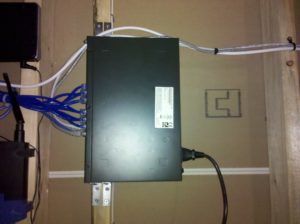I am ultra-paranoid about backups. I basically don’t trust them unless I make them myself, and I honestly don’t believe that they are really good even then. But luckily my silliness ends there; I let the computer test them for ZIP integrity and leave it at that.
But it is hard to stop the “silliness”. Those files are all that programmers have to show for a lot of hard work. I think that other professions have it slightly worse, though. Other creative types can see their work, but usually can’t easily make copies. Although nowadays photographers are pretty much just like programmers as far as backups go…welcome to hell (next up: film directors). At least those other products don’t disappear if a hard drive fails, or some scum walks off with your laptop. I guess it depends on how light your products end up being. Well, files are just a bunch of magnetized sequences on a fragile platter or ink burns in plastic or some other method. Pretty easy to steal and ridiculously fragile.
So, after the incident at Project Zomboid where they were ripped off by burglars, I felt terrible. This is basically one of the horror scenarios my paranoia harangues about, and I can’t imagine how those guys felt. It must have been excruciating.
Way back when I was in charge of such stuff, I made daily backups to another machine, weekly backups to tape cartridges with a monthly rotation. Milestones and releases got a tape cartridge sent to a government bunker somewhere and then way offsite. I basically covered office, local, and regional disasters for our artifacts, because I felt this is what the company would want. It wasn’t much work for something worth a lot of money, but no one told me to do this.
Of course, I was a developer; it is more logical to me for IT or infrastructure guys to take care of backups. In my experience so far it seems that backups only usually go as far as the creators of the project. Some of it is purely an ownership question: most people don’t care how office mates take care of their stuff as long as it doesn’t impact their island of responsibility. And I also think it’s a kind of miscommunication; you warn bosses and administrators that the codebase needs that protection, but it becomes very low priority mentally because it seems incredible that someone wouldn’t take care of it. And no one really believes a disaster will happen until it does. Unless you are paranoid!
Now being on my own, I get to do all the jobs, and one thing I want to do is make sure I have a good backup system. I want to utilize a wiki and source control, and basically keep everything electronic, and to me that means:
- Daily automated backups of the wiki and Subversion repositories on the server to a hard drive that is safely protected from fire and water damage. The automated backup script keeps the last 14 days of backups on the drive.
- Weekly compressed mirrors of the whole server to an alternating pair of external hard drives kept in fire- and water-proof conditions when not in use.
- Monthly backups to a pair of DVDs of the wiki and Subversion repositories. One DVD is kept locally and the other is stored offsite in fire- and water-proof conditions.
I could probably do weekly backups with two sets of four DVDs and send one set offsite rather than doing one DVD, but that’s a bit far, even for me. Maybe if things really take off that will become the practice I follow.
Now to make something worth taking these kind of precautions.
